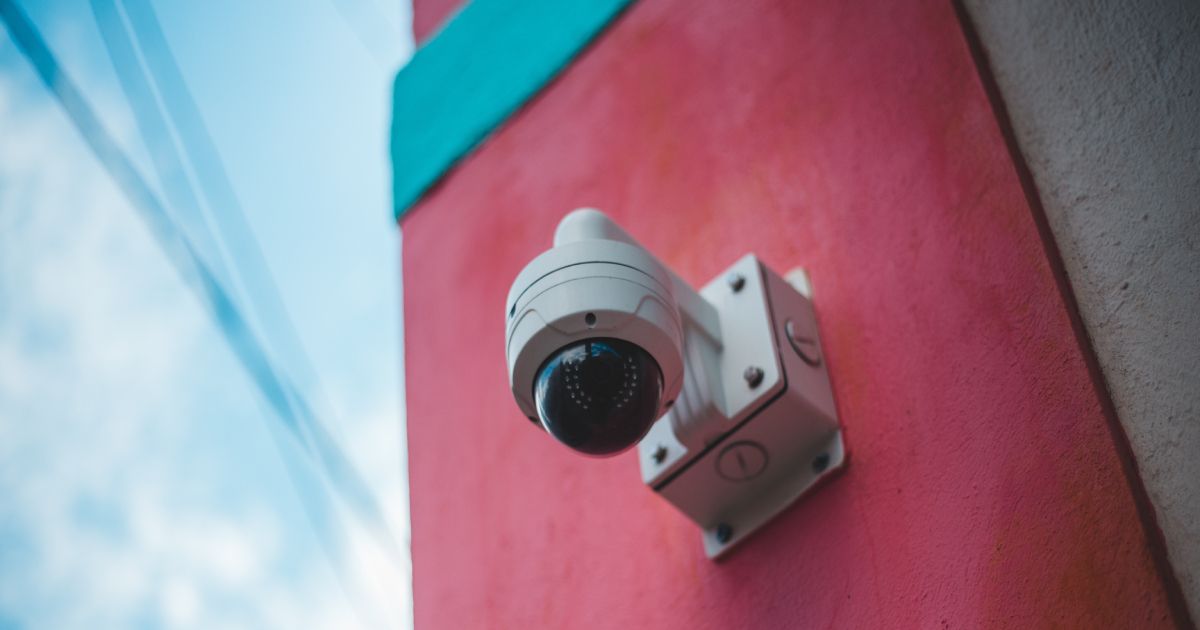What is a Smart Home? Everything You Need to Know

In the age of rapidly advancing technology, the concept of a smart home has emerged as a transformative way to redefine traditional living spaces. A smart home, also known as a connected home or home automation system, refers to a dwelling where various devices, appliances, and systems are integrated and interconnected through the Internet of Things (IoT).
This interconnectedness empowers homeowners to remotely control, monitor, and manage their living environment, offering unparalleled convenience, security, energy efficiency, and customization.
The Foundation: Internet of Things (IoT)

The foundational principle at the heart of a smart home is the Internet of Things (IoT), a dynamic network that empowers devices to establish communication and exchange data over the internet. This connectivity serves as the vital framework underpinning the operational prowess of a smart home, enabling devices to seamlessly cooperate and react with intelligence to user commands and shifts in the environment.
From cutting-edge smart thermostats and sophisticated lighting systems to advanced security cameras, door locks, and even kitchen appliances, these devices can be effortlessly managed from a distance through a centralized hub or the convenience of a smartphone application.
In this interconnected ecosystem, smart homes not only present a heightened level of convenience but also introduce a new dimension of control and automation. The ability for devices to interact in real time and harmonize their functions based on predetermined settings ensures that the living environment is both responsive and adaptive.
As occupants navigate their daily routines, the intelligent synchronization of devices facilitates a seamless flow of operations, such as adjusting lighting and temperature levels to match the time of day or remotely unlocking doors to grant access to authorized individuals.
This synergy between devices not only enhances convenience but also marks a significant step towards a future where living spaces are imbued with a level of sophistication and automation that were once purely the realm of science fiction.
Enhanced Convenience and Comfort

The allure of smart homes extends beyond mere technological novelty, as they present an unmatched realm of convenience that empowers users to exert precise control and personalization over their living spaces.
Envision the scenario of returning home after a long day, and seamlessly watch as your smart home orchestrates an ambiance tailored to your exact preferences. Your home system may effortlessly adjust the thermostat to your preferred temperature, illuminate the space with just the right amount of light, and even serenade you with your preferred music selection.
The capacity to create and program these automated routines and scenarios ensures that your living environment is attuned to your daily rhythms, whether it involves gently rousing you from slumber with a gradual illumination or creating a cinematic atmosphere for an immersive movie night.
In the world of smart homes, convenience converges with sophistication as technology becomes an intuitive extension of your lifestyle. Remote access through smartphone applications empowers you to oversee and adjust your home's operations even when you're away, further enhancing the seamlessness of your living experience. Whether it's preheating the oven on your way back from work, checking in on security cameras, or simply ensuring that all lights are turned off, smart homes offer a new level of control that complements the modern pace of life.
This fusion of convenience and personalization transforms the way we interact with our living spaces, making every interaction with our homes an opportunity to revel in the harmonious marriage of technology and comfort.
Efficiency and Energy Savings

Embracing the concept of a smart home brings with it the promise of remarkable energy efficiency. The integration of intelligent devices, ranging from thermostats to lighting systems, opens up avenues for meticulous energy management. By harnessing the power of automation, these devices can be precisely tailored to adjust their settings in response to occupancy patterns and the availability of natural light.
A case in point is the emergence of smart thermostats that seamlessly learn your daily routine and, in turn, optimize heating or cooling to save energy during periods of absence. This adaptability not only ensures a comfortable environment upon your return but also contributes to a substantial reduction in energy consumption.
The ingenious application of smart technology extends further with the introduction of intelligent lighting systems. These systems boast the ability to detect unoccupied rooms and promptly turn off lights, effectively eliminating the wasteful use of electricity. Whether it's the effortless dimming of lights during daylight hours or the precise scheduling of lighting scenes to align with your daily activities, smart lighting epitomizes the potential for energy conservation without compromising convenience.
This marriage of sustainability and modern living not only translates into substantial cost savings on utility bills but also aligns with the imperative of responsible resource utilization, demonstrating that the future of living spaces lies in the harmonious convergence of technology and environmental consciousness.
Elevated Security and Safety

In the realm of smart homes, security takes center stage as a fundamental priority, and these modern living spaces present an arsenal of innovative tools to fortify safety and cultivate peace of mind. The deployment of smart security cameras, motion sensors, and doorbell cameras equips homeowners with the ability to monitor their property from afar, receiving instant alerts should any suspicious activity be detected.
This real-time insight empowers users to take swift action or alert authorities, bolstering the protective shield around their homes. The integration of smart door locks introduces an elevated level of control, allowing remote access management for guests or service providers, negating the need for physical keys and thus mitigating the risk of unauthorized entry.
Complementing these vigilant measures are smart smoke detectors and water leak sensors, poised to revolutionize hazard detection and response. By harnessing the power of connectivity, these devices not only identify potential threats promptly but also transmit alerts directly to your smartphone, ensuring that you remain informed even when you're away from home.
This proactive approach grants homeowners the opportunity to intervene swiftly, minimizing damage and swiftly addressing emergencies. In essence, the embrace of smart technology transforms the concept of home security from a passive endeavor into an actively managed endeavor, ushering in a new era of control, awareness, and preparedness that bolsters the sanctity of one's living environment.
Disadvantages of a Smart Home

While the advent of smart homes brings about a myriad of benefits, it's crucial to acknowledge the potential downsides that come hand in hand with these advanced technological environments.
One notable concern revolves around the issue of privacy and data security. As smart devices continually collect and transmit data to provide personalized experiences, there's a heightened risk of unauthorized access or breaches. Malicious actors could potentially exploit vulnerabilities in the interconnected network, gaining access to sensitive information and compromising the privacy of homeowners. To counteract this, stringent cybersecurity measures and regular updates are imperative to safeguard the integrity of personal data and maintain a sense of trust within the smart home ecosystem.
Another drawback to consider is the initial investment required to transform a conventional home into a smart one. While the long-term benefits are undeniable, the upfront costs of purchasing and installing smart devices can be substantial. Homeowners may need to weigh the financial commitment against the potential savings and convenience gained over time.
Additionally, the compatibility of different devices and systems could lead to complexity, with some devices not seamlessly integrating with each other or requiring specialized skills for setup and maintenance. This could potentially lead to frustration and an increased learning curve, particularly for those less tech-savvy.
As the landscape of smart home technology rapidly evolves, ensuring that devices remain up to date and remain compatible with each other can also pose a challenge, necessitating continuous research and investment in the latest solutions.
Top Smart Home Devices
- Amazon Echo Assistant: Amazon's Echo devices with Alexa voice assistant are among the most well-known and widely used smart speakers. They offer voice control for various tasks, smart home control, music playback, and more.
- Google Nest Thermostat: The Google Nest Thermostat is known for its energy-saving features and smart learning capabilities. It learns your preferences and adjusts the temperature accordingly, helping to optimize energy consumption.
- Ring Video Doorbell Pro: The Ring Video Doorbell Pro offers a combination of security and convenience by allowing you to see, hear, and speak to visitors at your door through a smartphone app, even when you're not at home.
- Philips Hue Smart Bulbs: Philips Hue smart bulbs provide customizable and color-changing lighting solutions for your home. They can be controlled remotely and integrated with smart assistants for voice commands.
- iRobot Roomba Robot Vacuums: Roomba robot vacuums from iRobot are popular for their autonomous cleaning capabilities. They can navigate your home, vacuuming floors while avoiding obstacles and returning to their charging dock when needed.
- August Smart Lock Pro: This smart lock offers keyless entry, remote control, and compatibility with voice assistants like Alexa and Google Assistant. It also features DoorSense technology to detect if your door is securely closed and locked.
- Sonos One Smart Speaker: The Sonos One is a versatile smart speaker that delivers impressive sound quality and supports voice control through both Amazon Alexa and Google Assistant. It can be used individually or paired with other Sonos speakers to create a multi-room audio setup. The Sonos app also allows seamless streaming from various music services, making it an excellent addition to any smart home sound system.
Future Possibilities and Conclusion
As technology continues to evolve, the concept of a smart home is continually expanding. Innovations such as artificial intelligence, machine learning, and voice recognition are poised to revolutionize the way we interact with our living spaces.
The ability to seamlessly connect various devices and systems under a unified platform holds the promise of creating homes that are not only smarter but also more intuitive and adaptive to our needs.
In conclusion, a smart home is a testament to the boundless potential of technology to enhance our daily lives. By integrating devices, appliances, and systems through the Internet of Things, smart homes offer a harmonious blend of convenience, efficiency, security, and customization.
As smart home technology continues to advance, the way we interact with our living spaces is poised to undergo a transformation that will shape the future of modern living.





